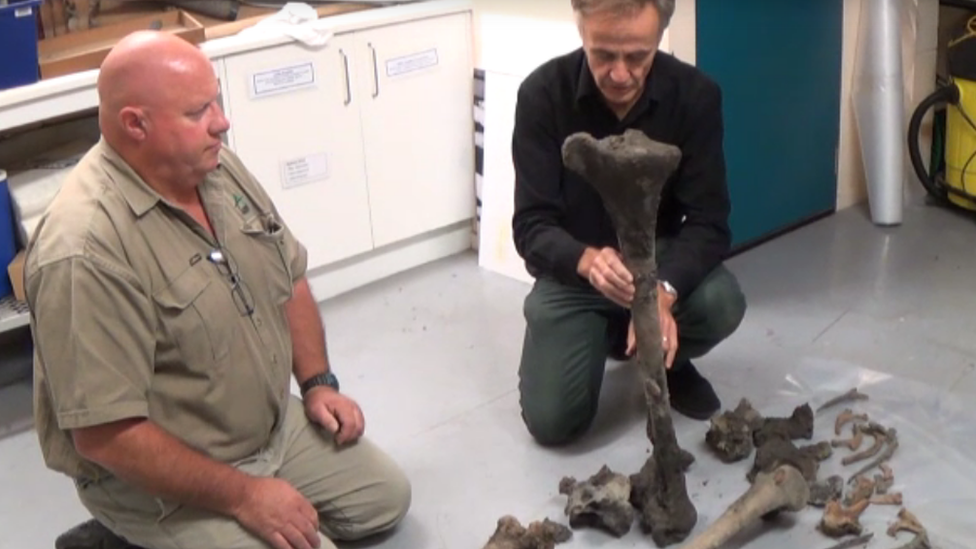New Zealand contractors unearth giant bird bones
- Published

Museum director Philip Howe (right) says the bones belong to at least two moa
Contractors at a site in southern New Zealand have made an unexpected find while digging a trench - dozens of bones belonging to a long-extinct species of giant bird.
Workers spotted the bones during excavations in an area of South Canterbury which was once swamp land, . They've been identified as belonging to a female South Island giant moa, an enormous flightless bird which roamed the area . One of the bones is thought to belong to a smaller male moa.
Stumbling upon moa bones is increasingly rare, according to South Canterbury Museum director Philip Howe. "This is quite a significant find because in this day and age we're not finding moa bones all round the place like people did maybe 100 years ago," he tells the site. "A discovery is quite a chance thing - it's not something you can just hope to go out and find."
Project manager Dave Sutton says the small size of the trench dug by his team made the discovery even more unlikely. "It's not every day you dig a hole and find a moa," he says. "Only one small hole and this is the result."
Among the nine species of moa, at about 2m (6.5ft) tall and weighed a whopping 250kg (550lb), while others were closer to the size of a turkey. Unlike other flightless birds, moa had lost all trace of ever having wings. They were hunted to extinction after Polynesian colonists arrived in New Zealand around AD1300.
How the newly excavated moa met their end isn't clear. But Mr Howe says finding remains of both a male and female "begs the question: was this the tragic outcome of a Sunday picnic at the swamp with the moa family?"
Moa birds - here in model form at a Wellington museum - bore no hint of wings
Next story: Japan spas urged to relax tattoo rules for tourists
Use #NewsfromElsewhere to stay up-to-date with our reports via .